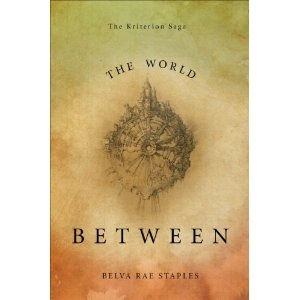The World Between
The Kriterion Saga
“He was a born ruler. Why was it impossible for people to see that? Something was bound to happen sooner or later to thrust him forward toward his destiny. For now, he would wait.”
A work of juvenile fiction that blends fantasy and religious allegory with a moral tale, Belva Rae Staples’s The World Between presents the story of a young man’s twisted quest for power in two worlds. As the author reveals how his mind becomes flawed, she offers lessons about the importance of parents disciplining their children and the dangers of living a self-centered life.
The World Between is the story of Georgie O’Dell around the age of eight or nine and his elderly neighbor, Miss MacAlpin, as she tells him a saga she’s never told another soul. There is one condition that Miss MacAlpin requires of Georgie: That he give his “solemn promise to commit the story to paper,” which he finally does as an adult many years later.
The tale is of Alex Edgecomb, a selfish, indulged young man with a dark, murderous heart who believes the world should bow to him. And when it doesn’t, he finds his way to another world, called Kriterion, where he schemes to overthrow the good king and rule with a despotic hand. He finds his way into the king’s graces and plots his rise to power, a plan that will end with a revolt that, he believes, can’t possibly fail.
Staples’s story and plot are intriguing, and her writing is sharp. While events leading to the climax come too quickly and easily for Alex, making them slightly less believable, this doesn’t diminish the reader’s interest.
Alex’s fatal flaw, which “began small, as most things do, and grew to such proportions of ugliness that were it to be seen with the eye most people would shudder and turn away,” contributes to the story’s powerful lesson, and is reminiscent of Aesop or the Grimm brothers. The World Between is both fantasy and fable, and it teeters on the edge of preachy. Sometimes Alex’s character seems a bit too extreme, making the reader think they’ve missed something.
The book is also a Christian religious allegory, which may be lost on younger readers. The allegory isn’t as fleshed out in the beginning of the book as it should be, so it is startling and slightly awkward when the biblical imagery increases toward the end of the story. Nevertheless, the allegory does add a rich layer.
This book fits with young readers’ fascination with flawed characters and imperfect lives. But although it’s billed as juvenile fiction, this book is not for young children. It contains dark themes and instances of curse words. Parents will need to consider their child’s sensitivity to such matters. However, the book may be appropriate for mature children who are ready to think about why and how people become evil and to learn some key life lessons about selfishness, responsibility, and respecting authority.
Reviewed by
Diane Gardner
Disclosure: This article is not an endorsement, but a review. The publisher of this book provided free copies of the book and paid a small fee to have their book reviewed by a professional reviewer. Foreword Reviews and Clarion Reviews make no guarantee that the publisher will receive a positive review. Foreword Magazine, Inc. is disclosing this in accordance with the Federal Trade Commission’s 16 CFR, Part 255.

